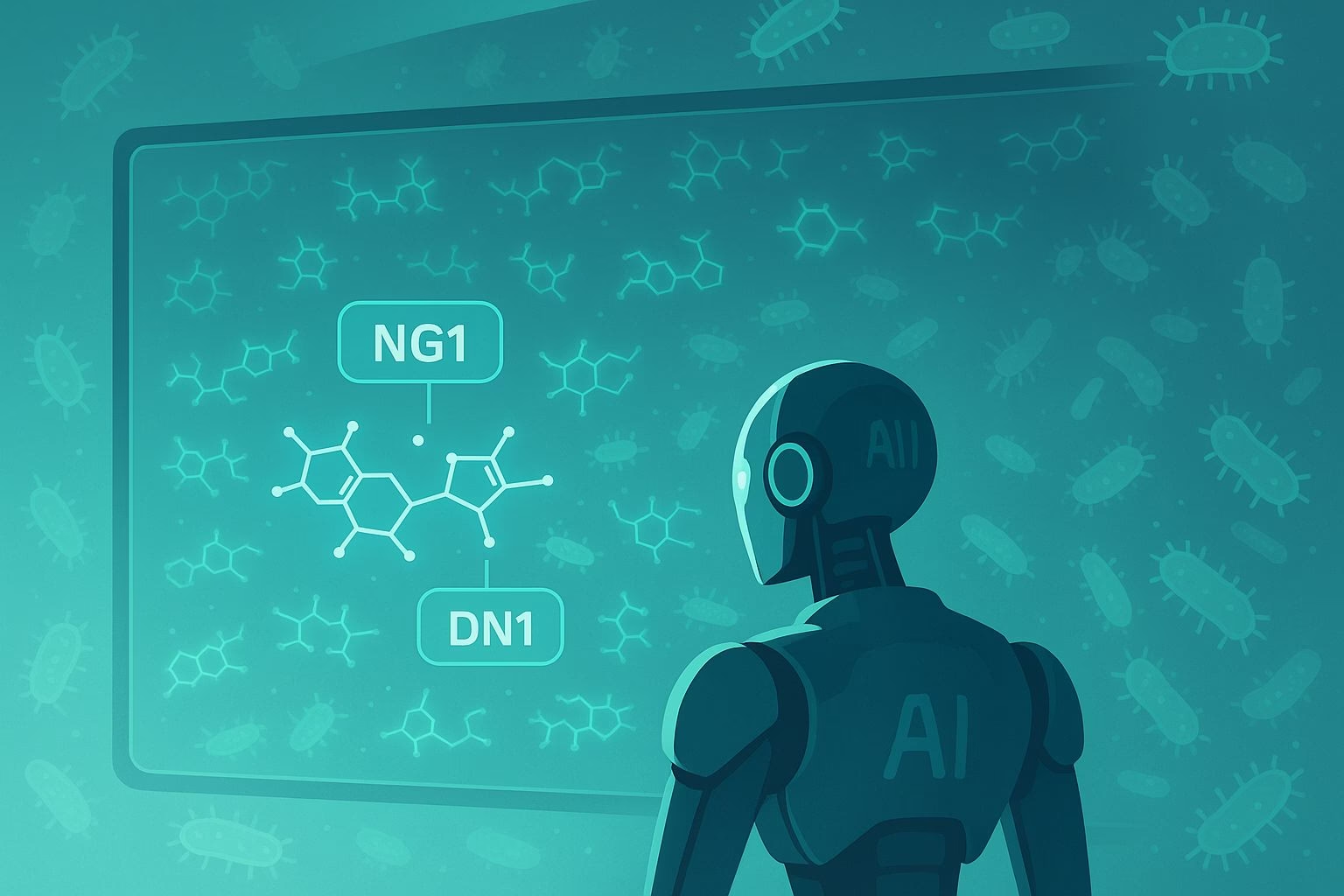AI-designed antibiotics could change the fight against superbugs
MIT researchers have developed two new antibiotics using generative AI, targeting some of the most dangerous drug-resistant bacteria.
According to MIT News, these AI-designed drugs, named NG1 and DN1, show promise against gonorrhea and MRSA, both of which are responsible for serious and often hard-to-treat infections.
The process involved training AI models on massive datasets of chemical compounds, generating over 36 million theoretical molecules, and then screening them for bacterial killing power and safety in humans.
The results were striking. NG1 was effective against drug-resistant gonorrhea, while DN1 cleared MRSA skin infections in mouse trials.
The research team believes this could mark the start of a “second golden age” for antibiotic discovery.
The study, published in Cell, demonstrates how AI can navigate chemical spaces beyond human intuition, potentially giving us a proactive edge in the arms race against evolving bacteria.
How the AI breakthrough happened
The MIT team approached the problem by creating a generative AI system that could design entirely new chemical structures.
Instead of relying on existing drug libraries, the model was trained to understand the relationship between a compound’s structure, its antibacterial activity, and its safety profile.
From there, the system generated 36 million potential drug candidates. This massive pool was narrowed down through simulations and virtual screening, testing each for the ability to kill harmful bacteria without harming human cells.
Only a small fraction passed these criteria, leading to the identification of NG1 and DN1 as the strongest candidates.
This method is a major shift from traditional drug discovery, where researchers often modify known compounds or test a limited number of chemicals.
By letting AI explore the full chemical landscape, researchers can move beyond incremental improvements and uncover new ways to target bacterial vulnerabilities.
Why this matters in the antibiotic crisis
The world is facing a growing antibiotic resistance problem, with infections that were once easily treatable now becoming life-threatening.
MRSA, for example, can cause severe skin, lung, and bloodstream infections, while drug-resistant gonorrhea is becoming harder to treat with current medications.
The traditional pipeline for developing antibiotics is slow and expensive, often taking more than a decade from discovery to approval. This lag has made it difficult to keep pace with bacteria that can evolve resistance in just a few years.
MIT’s work shows that AI can compress this process, moving from concept to promising drug candidates in a fraction of the time.
By finding new chemical pathways that bacteria have never encountered, there is a better chance of creating treatments that remain effective for longer periods.
This approach may not solve the problem overnight, but it represents one of the most promising shifts in how we develop antibiotics in decades.
What comes next for AI-designed antibiotics
The compounds NG1 and DN1 still need to undergo rigorous testing before they can be used in humans.
This includes toxicity studies, dosage optimization, and clinical trials to ensure both safety and effectiveness. Even with promising early results, it could be years before these antibiotics are available for medical use.
Researchers are already planning to expand the AI search process to target other dangerous pathogens.
The same approach could be adapted to find treatments for tuberculosis, sepsis-causing bacteria, and even fungal infections.
If successful, it would create a pipeline of entirely new drugs ready to step in as resistance erodes the effectiveness of older medicines.
The broader takeaway is that AI is no longer just a supporting tool in drug discovery.
It is becoming a central driver of breakthroughs, helping scientists explore areas of chemistry too complex or vast for traditional research methods.
This shift could change how quickly we respond to emerging health threats and give us the advantage in the fight against antibiotic resistance.


This is incredible stuff